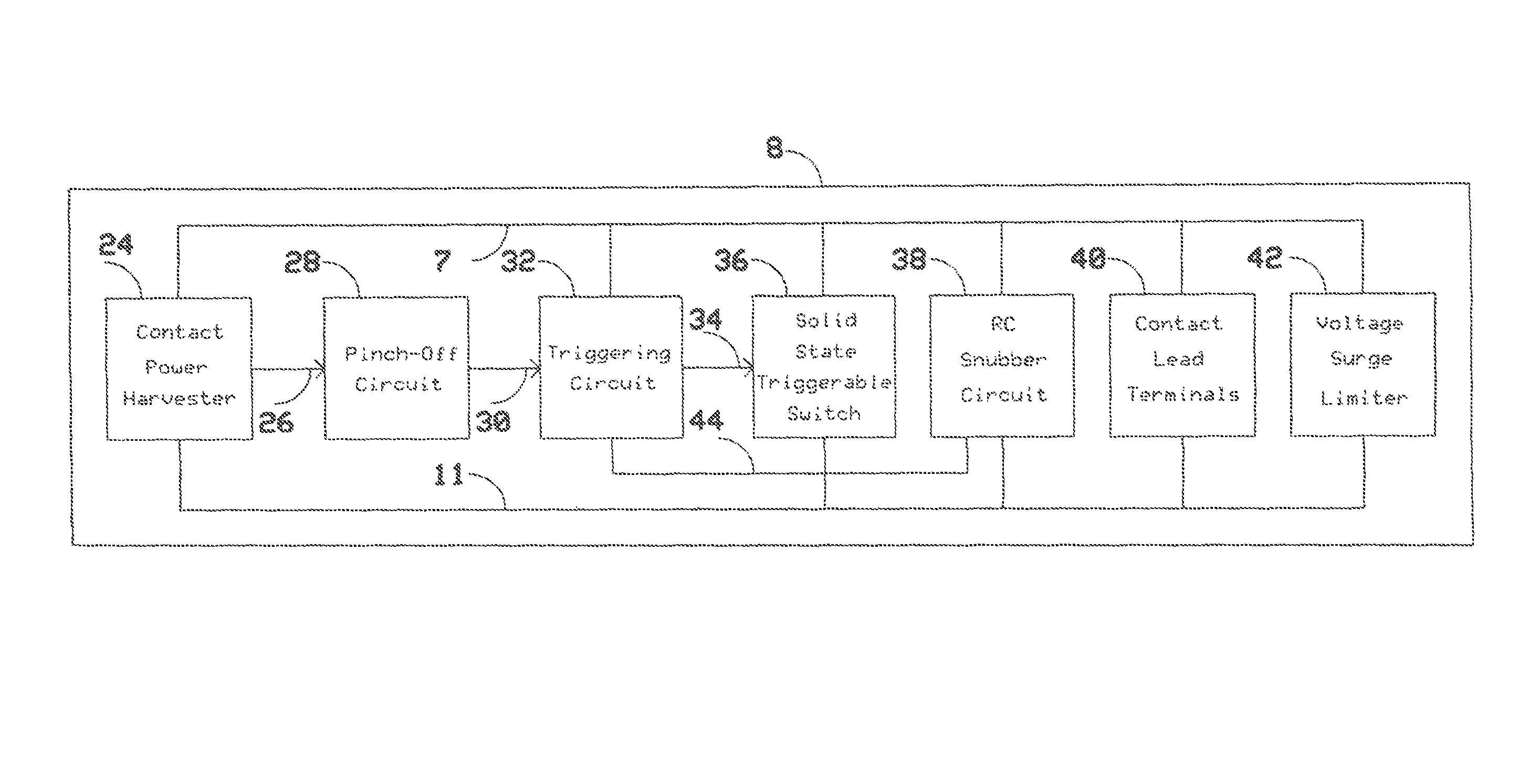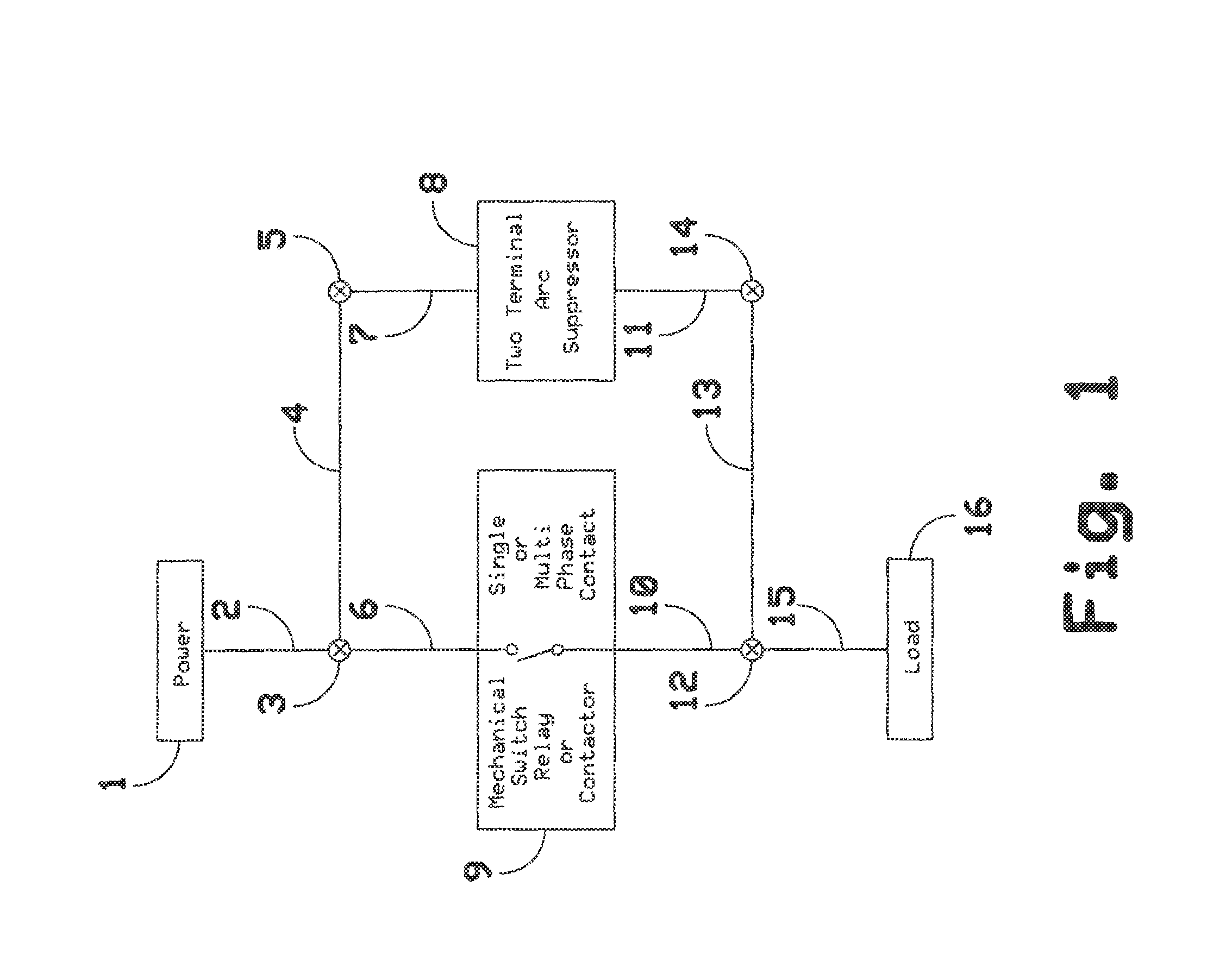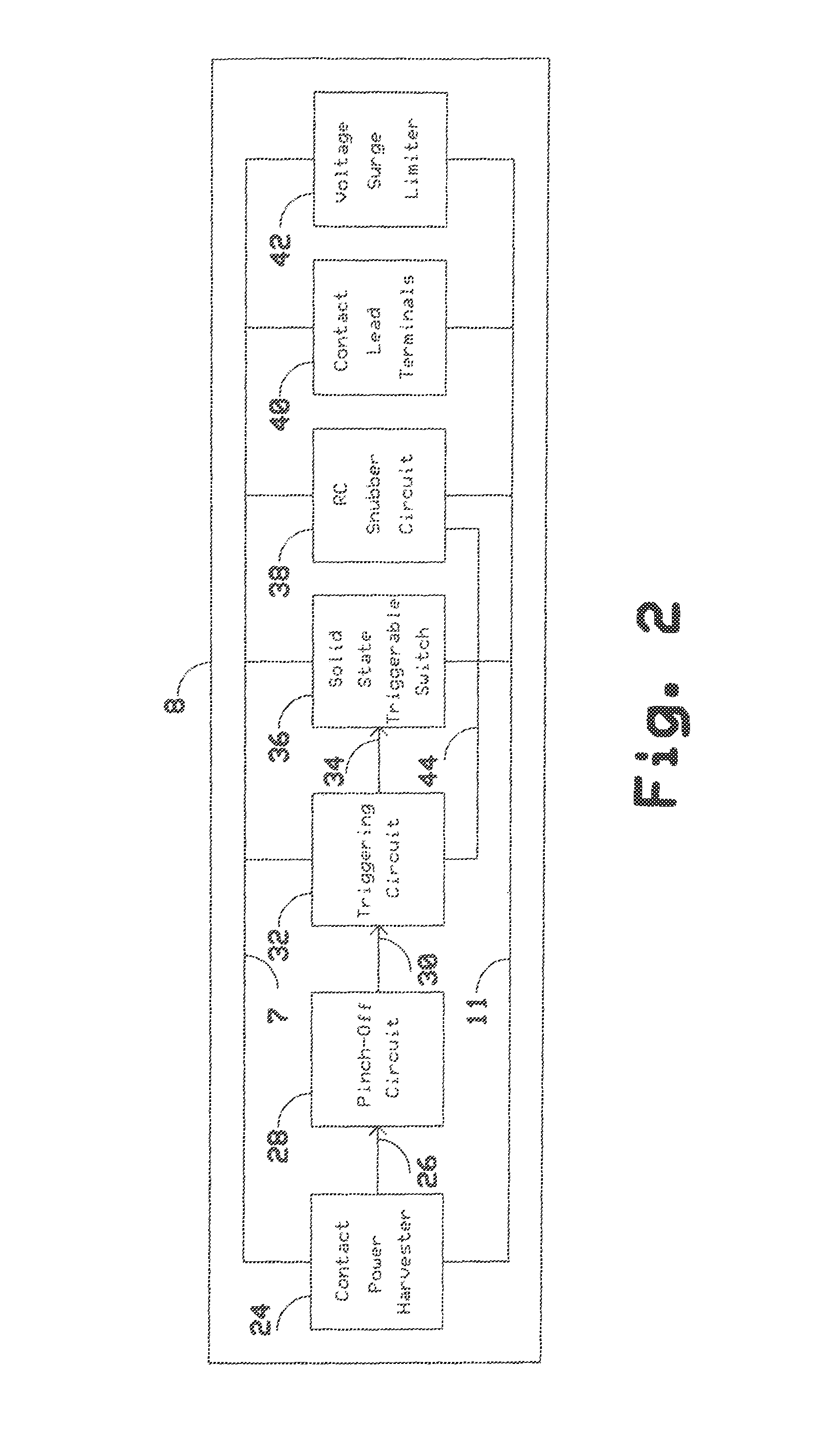Two terminal arc suppressor
a technology of arc suppressor and terminal, which is applied in the direction of emergency protective devices, electrical equipment, emergency protective circuit arrangements, etc., can solve the problems of increased maintenance costs, equipment failure, unnecessary down time on production lines, etc., and achieve the effect of greatly strengthening the microweld connection
- Summary
- Abstract
- Description
- Claims
- Application Information
AI Technical Summary
Benefits of technology
Problems solved by technology
Method used
Image
Examples
Embodiment Construction
[0040]The following detailed description relates to a two terminal arc suppressor directed toward extending the life of switches, relays and contactors used to switch either an alternating current (AC) or a direct current (DC) source to a load.
[0041]The following detailed description includes discussion of a two terminal arc suppressor connected to a mechanical switch, relay or contactor. Additionally, elements of a two terminal arc suppressor discussed including a contact power harvester, a pinch-off circuit, a triggering circuit, a solid state triggerable switch, an RC snubber circuit, contact lead terminals, a voltage surge limiter and a timing diagram is included.
[0042]The present invention can be readily understood from a discussion of FIGS. 1 through 6.
[0043]FIG. 1 illustrates generally an example of a system including a two terminal arc suppressor 8. In an example, an AC or a DC power source 1 is connected via wire 2 to the terminal 3 of a mechanical switch, relay or contacto...
PUM
 Login to View More
Login to View More Abstract
Description
Claims
Application Information
 Login to View More
Login to View More - R&D
- Intellectual Property
- Life Sciences
- Materials
- Tech Scout
- Unparalleled Data Quality
- Higher Quality Content
- 60% Fewer Hallucinations
Browse by: Latest US Patents, China's latest patents, Technical Efficacy Thesaurus, Application Domain, Technology Topic, Popular Technical Reports.
© 2025 PatSnap. All rights reserved.Legal|Privacy policy|Modern Slavery Act Transparency Statement|Sitemap|About US| Contact US: help@patsnap.com



